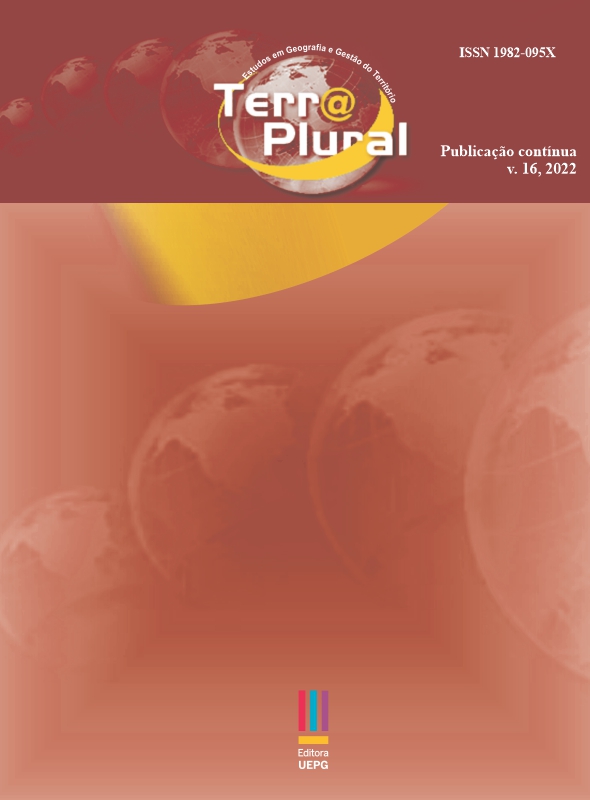Urban environmental filters on the movement of birds and bats in a medium-sized city in Southern Brazil
DOI:
https://doi.org/10.5212/TerraPlural.v.16.2215909.027Keywords:
urban ecology, connectivity, quality of environment, urban biodiversityAbstract
Urbanization causes drastic changes in the diversity and distribution of many species in Brazil, there are insufficient data on the accessibility and quality of urban forest fragments for wildlife. Thus, we estimated the proportion of bird and bat species barred from entering the intra-urban area of Ponta Grossa (PR) through a multiscale study of landscape and vegetation quality in the core area and the avian and chiropteran fauna present. Phytosociological analyses were carried out by means of tree and shrub vegetation plots in three urban parks. Bird surveys were carried out in a non-systematic manner over 12 months at dawn and dusk at potential birding sites in the urban area. Data on bats were obtained from the literature on local sampling in the urban area. Finally, landscape fragmentation metrics were calculated to assess the resistance of urban areas to the transit of the target species. A total of 142 shrub and tree taxa were surveyed in forested urban remnants, with diversity H' ranging from 3.68 to 3.87. This vegetation supported 62 species of birds and 8 bats, exceeding the literature estimative. The urban space is frequented by 37% of the regional avifauna and 50% of the regional chiropterofauna. The forest fragments have significant areas with a good supply of resources, close enough to connect these populations. However, the species observed are mostly generalists due to the poverty of the transition area corridors, which causes those peri-urban source areas could strongly select species adapted to environments subjected to edge effects. An integrated analysis of the vegetation cover of riparian areas, street trees, and backyard vegetation could point out the bottlenecks that urban planning should focus on to increase the environmental quality of the urban area.
Downloads
Downloads
Published
How to Cite
Issue
Section
License
Copyright (c) 2022 Terr@ Plural

This work is licensed under a Creative Commons Attribution-NonCommercial-NoDerivatives 4.0 International License.
Revista Terr@ Plural will obtain the auctorial rights for all published texts. This also implies that the text can be published anywhere in the world, including all rights on renewal, expansion, and dissemination of the contribution, as well as other subsidiary rights. The authors get permission to publish the contribution in other media, printed or digital, it may be in Portuguese or translation since the publication is credited to Revista Terr@ Plural. It allows the self-archiving of published articles in institutional repositories, thematic repositories, or personal web pages in the pdf version downloaded from the journal's site.















